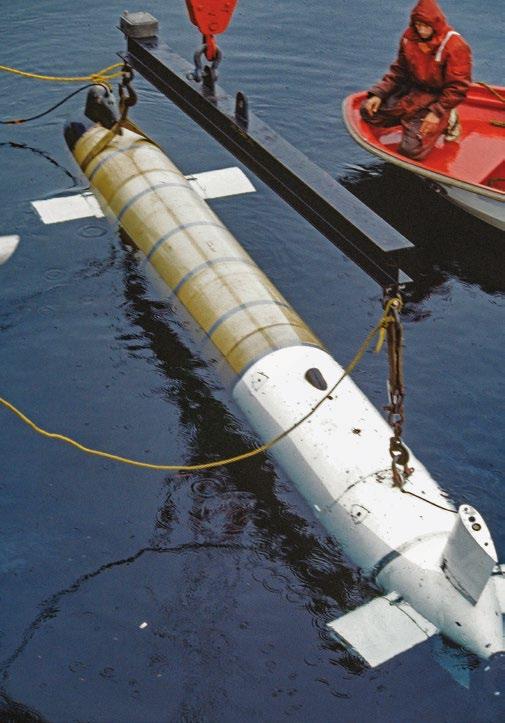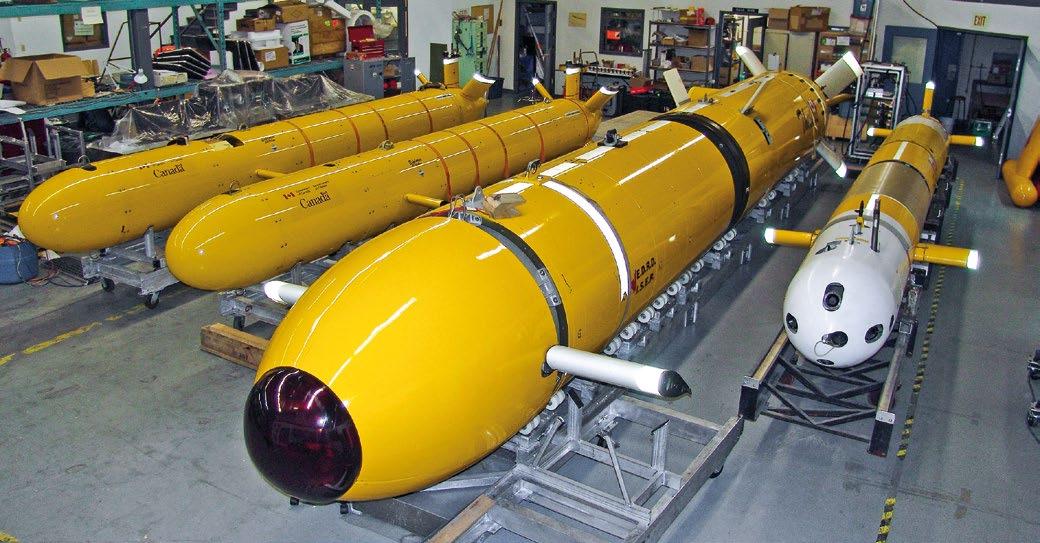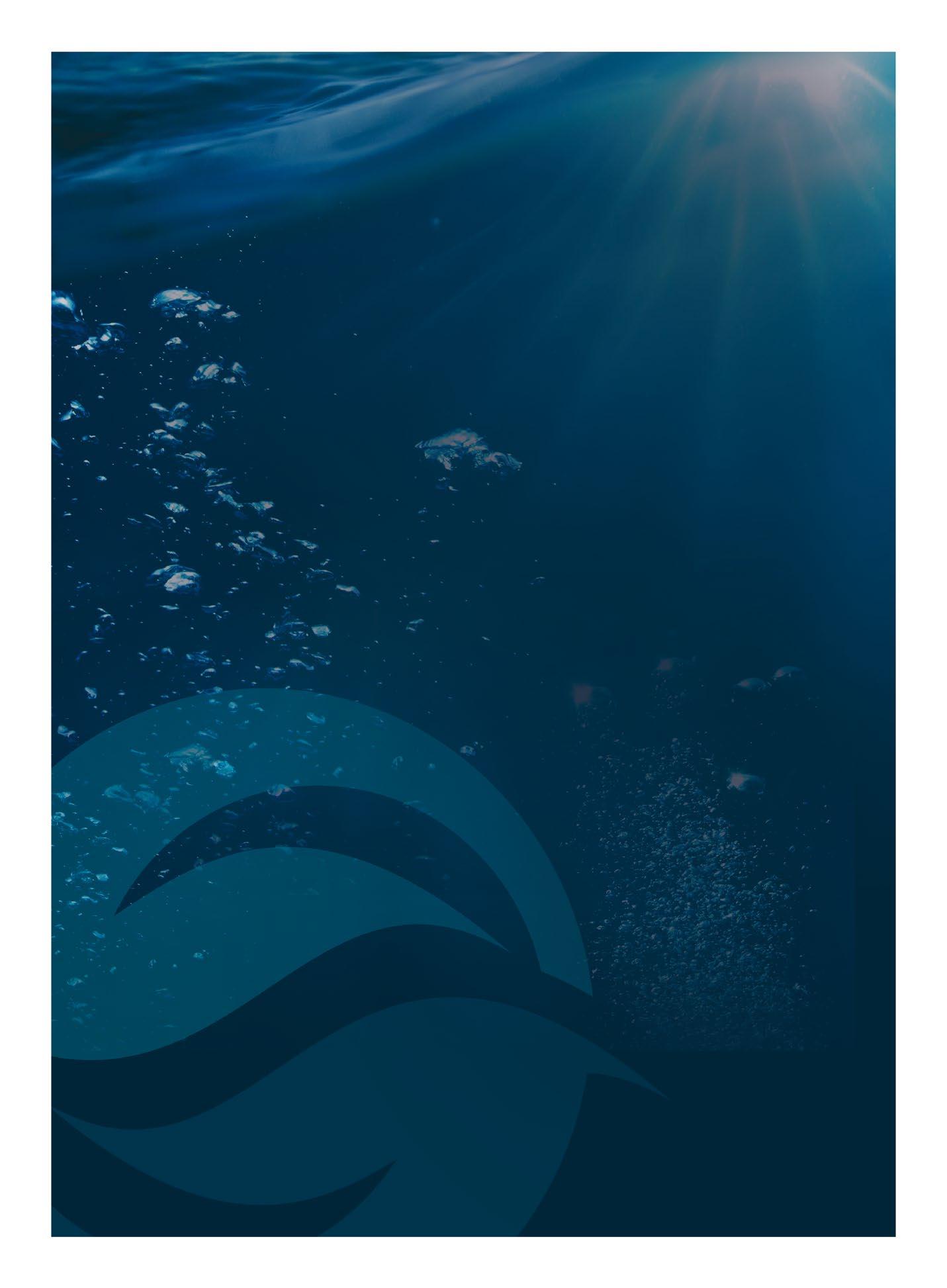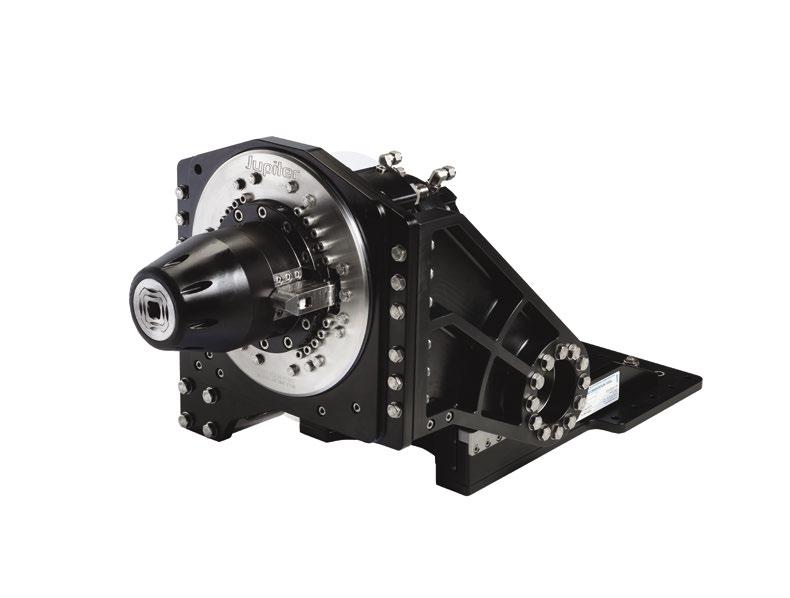
7 minute read
ARCS: Canada’s First AUV
ARCS
By Bruce Butler, P.Eng.
Advertisement
CANADA’S FIRST AUV
In 1982, the Canadian Hydrographic Service (CHS) identified the need to perform cost-effective hydrographic surveys in Canada’s Arctic waters. In 1983, CHS awarded International Submarine Engineering Ltd. (ISE)—based in Port Moody, BC—a contract to design and build an underwater vehicle that would meet those survey needs.
Named the Autonomous Remote Controlled Submersible, ARCS was originally considered an “autonomous ROV” (hence its name) but was soon referred to as an AUV. ARCS was not the world’s first AUV; that honour falls on the University of Washington Applied Physics Laboratory and their SPURV vehicle back in 1957. ARCS was, however, Canada’s first AUV.
VEHICLE DESIGN
ARCS is torpedo-shaped, rated for 300m depth, with a length of 5.2 metres, a diameter of 82 cm, and weighed 1360 kg. A second, option battery hull section increased the length to 6.4 metres and weight to 1820 kg. It was propelled by a single stern propeller powered by a pair of independent, direct-drive brushless DC motors. Vehicle maneuvering was via a pair of horizontal fore planes and four stern planes (“+” configuration).
ARCS could run at 5 knots for 7 hours on a single, 10 kWh bank of rechargeable NiCd batteries. When outfitted with the optional second battery hull section, endurance was roughly doubled.
CONTROL SYSTEM
In the early 1980s, research into vehicle control systems was in its infancy and embedded computer hardware was large, costly, and had little processing power or memory. ARCS needed a control system that would meet the demands of under-ice missions, and ISE engineers came up with a novel solution. Drawing on the experience of one staff member who was a former submarine captain, ISE modelled the control system on the command hierarchy of a manned submarine. The control software would reside on a bank of three Intel 8086-based, single-board Multibus-II computers running the RMX real-time operating system.
The Engineering computer (“Eng”) handled the vehicle’s engineering functions such as thruster motor, dive planes, and most sensors. Eng also accepted data from the obstacle avoidance sonar and determined the appropriate avoidance maneuver. The Navigation computer (“Nav”) interfaced with the navigation sensors to determine the vehicle’s attitude and position. It also determined the heading and depth setpoints needed to steer towards the current mission waypoint (and
Courtesy of Bruce Butler / International Submarine Engineering Ltd.


Courtesy of Bruce Butler / International Submarine Engineering Ltd.

Courtesy of Bruce Butler / International Submarine Engineering Ltd.
sent them to Eng). The Conning computer (“Conn”) acted as the submarine captain, controlling the vehicle’s operational mode, communicating with the operator console and processing manual commands from a human operator.
To provide the reliability needed for under-ice missions, a second, duplicate computer bank was provided. A separate Fault Tolerant Monitor board (FTM), comprising three independent processors that monitored the two computer banks, majority-voted to decide which computer bank was in control.
COMMUNICATION
Although ARCS was expected to be autonomous, a custom acoustic telemetry system, designed specifically for underice operation, was developed for vehicle monitoring and remote control. Using frequency-shift keying and triple diversity to overcome multipathing, this telemetry system provided reliable, 50 bps full-duplex communications at up to 10 km range.
NAVIGATION
ARCS navigated primarily via dead reckoning, using a northseeking mechanical gyrocompass for heading and a Doppler sonar for ground and water speed. The dead reckoning solution was augmented with an onboard long baseline acoustic positioning system that measured range to multiple transponders deployed below the ice cover. Together, these two systems provided a position accuracy of ±5 metres. To operate under-ice, an AUV must be able to detect, then avoid an obstacle such as an ice keel or seamount. ARCS had eight echosounders mounted in the bow behind an acoustically transparent dome. These overlapping sonars acted as “cat’s whiskers,” allowing detection of obstacles up to 128 metres away. When operated in receive-only mode, these sonars were used to detect a homing beacon deployed below the ice, allowing ARCS to steer towards its recovery ice hole.
MILESTONES
It took ISE only two years to design and build ARCS. From January 1985 to February 1986, ARCS became fully functional, performing hundreds of manual and autonomous runs during sea trials in local BC waters.
In March 1986, ARCS completed its first autonomous hydrographic survey, travelling over 9 kilometres. These trials culminated with an obstacle avoidance test wherein the survey grid was purposely laid out to intersect the shoreline. While performing the hydrographic survey, ARCS detected the shoreline as an obstacle and steered to avoid it, eventually terminating its current survey line and moving onto the next line.
Funding for this project ran out in mid-1986, so ARCS never got to operate in the Arctic waters it was designed for. However, ARCS turned out to have considerable lifespan as a platform for research into autonomous vehicle technologies.
FOLLOW-ON WORK
In 1987, ISE re-activated ARCS to support a Johns Hopkins University Applied Physics Laboratory-funded effort to develop an AUV mission planner.
In 1990, ARCS was used to demonstrate autonomous cablelaying in support of the Canadian Department of National Defence’s (DND) Cold War program codenamed “Spinnaker,” the planned deployment of a prototype acoustic listening post on the seafloor in Canada’s Arctic waters. The success of these demonstration trials gave DND the confidence to green-light Project Spinnaker, which included the development of a larger, mission-specific AUV known as Theseus.

Courtesy of Bruce Butler / International Submarine Engineering Ltd.

In 1991, ISE and DND scientists used ARCS to collect the dynamics data needed to develop a hydrodynamic model for Theseus vehicle design. These trials comprised putting the vehicle through a sequence of radical maneuvers while collecting attitude data. So radical, in fact, that on one dive, the vehicle broached vertically halfway out of the water, nose-first.
In 1992, DND scientists outfitted ARCS with sidescan sonar to investigate whether an AUV could be used for route survey in support of mine countermeasure operations.
ARCS remained busy throughout the early 1990s supporting Theseus vehicle development. ARCS was first used to develop, debug, and sea trial the hardware and software for ISE’s generic vehicle control system. It then was used to test the Theseus high-accuracy navigation system: a north-seeking ring laser gyro-based inertial navigation unit coupled with a state-of-theart Doppler sonar. Together those sensors provided an accuracy of better than 1% of distance travelled. ARCS was also used to test out other subsystems and sensors destined for Theseus.
In 1993 and 1994, ISE outfitted ARCS with an AluPower 60 kWh aluminum-oxygen fuel cell. This air-independent system allowed ARCS to run autonomously and continuously for 35 hours.
In the fall of 1996, ARCS was re-purposed as a data collection platform by Simon Fraser University’s Underwater Research Laboratory. ARCS was outfitted with a SeaBird CTD and used to measure water temperature and salinity gradients by transecting the waters off the Burrard Thermal Generating Station, located at the eastern end of Vancouver’s Burrard Inlet.
ARCS took a well-deserved rest until the late 1990s when it was outfitted with a set of bow-mounted echo sounders to evaluate whether an AUV could map the underwater portion of icebergs off Canada’s east coast. This project ended with ARCS successfully circumnavigating and mapping a small island (the simulated iceberg) in BC waters.
In 2002, Memorial University of Newfoundland sponsored a project wherein ARCS was outfitted with a mass spectrometer to evaluate whether an AUV could be used to detect chemical plumes in the water column.
In 2003, the ARCS tail section underwent hydrodynamic testing at the University of British Columbia’s towing tank to help optimize the hull shape for ISE’s new Explorer-class AUVs.
SUMMARY
The Canadian-made ARCS AUV has a rich history, having made valuable contributions to the development of AUVs, including several “firsts.” It was the first commercially built AUV and the first to autonomously perform a hydrographic survey. It is arguably also the world’s first “true” AUV—the first underwater vehicle in marine history to operate independent of a command/control telemetry link and autonomously avoid obstacles.
ARCS has evolved over its nearly 40-year life and is expected to continue to support the development of Canadian AUV technologies into the future.
ABOUT THE AUTHOR
Bruce Butler worked at International Submarine Engineering Ltd. for fourteen years and was involved in the development of ISE’s ARCS, DOLPHIN, and Theseus vehicles. Want to learn more about ISE’s history? Bruce has written Into the Labyrinth: The Making of a Modern-Day Theseus, which is available in print, e-book, and audiobook formats: www.theseusbook.com



















